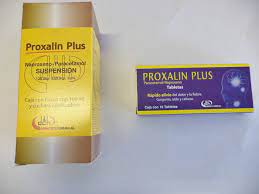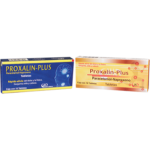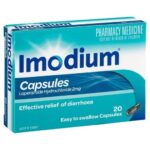Is Proxalin Plus a Safe Medication?

Proxalin Plus is a Mexican combination analgesic and antipyretic medicine containing naproxen and acetaminophen. Naproxen is a non-steroidal anti-inflammatory drug (NSAID). It works by reducing hormones that cause inflammation and pain in the body. Paracetamol is usually the best treatment for most types of pain, but naproxen is better for some types, such as period pain or back pain.
Acetaminophen on the other hand relieves pain by elevating the pain threshold, that is, by requiring a greater amount of pain to develop before a person feels it. It reduces fever through its action on the heat-regulating center of the brain. In combination, this medication has analgesic, antipyretic and weak anti-inflammatory action.
Is Proxalin Plus a Safe Medication?
Yes, Proxalin Plus is generally safe to take. However, taking the individual ingredient and not the combination medicine at different times is often more effective.
A person could start, for example, by taking Acetaminophen in the morning. The pain may return before the next scheduled dose, depending on the strength of the Acetaminophen. At the first sign of pain, a person could take Naproxen and continue to alternate the two as necessary. Staggering the medications can help to extend the relief from pain.
If instead, a person takes both at the same time, the combined pain relief may wear off before it is safe to take the next doses. There are other ways to alternate the medications effectively.
For example, a person may take either Acetaminophen or Naproxen every day to help control aches and pains from arthritis. If new pain arises, they could take the other drug as needed.
Or, if the pain is severe, taking regular doses of Acetaminophen may not provide relief. A person may decide to add regular doses of Naproxen. The combination may work better than either drug alone.
Acetaminophen, depending on the strength and type, can be taken as often as every four to six hours. Naproxen, depending on the strength and type, can be taken as often as every eight to 12 hours. Products marked “extra strength” or “all-day relief” should not be taken as often.
You don’t have to adjust your doses of either drug or take them at different times if you take both drugs. That said, taking the medications alternately may help provide better pain relief. For example, if you take a dose of naproxen, you can’t take another dose for eight hours. Five hours in, though, your pain may start bothering you again. In cases like this, you could take some acetaminophen to tide you over until your next dose of naproxen.
Safety considerations
Although both drugs are generally safe for most people to use, there are certain safety considerations you should keep in mind. Make yourself aware of these considerations to help avoid misusing these drugs.
Naproxen
Naproxen may cause allergic reactions, skin reactions, and severe stomach bleeding in some people. Using more than recommended or using it for longer than 10 days can also increase your risk of heart attack or stroke.
Severe stomach bleeding from naproxen is more common if you:
- are 60 years or older
- have had an ulcer or bleeding problem
- take other medications that can cause bleeding
- drink more than three alcoholic drinks per day
- take too much naproxen or take it for longer than 10 days
Acetaminophen
The biggest consideration when taking acetaminophen is the possibility of overdose. Acetaminophen is a common ingredient in many different over-the-counter products, so it can be easy to take too much without even realizing it.
An acetaminophen overdose can cause serious liver damage. To avoid this, you should understand your limit for acetaminophen. Generally, people shouldn’t have more than 3 g of acetaminophen per day. You can talk to your doctor to find out the specific limit that’s right for you. Then, keep track of how much acetaminophen you take by reading all medication labels. It’s often best to use only one medication that contains acetaminophen at a time.
Interactions
Naproxen and acetaminophen don’t interact with each other. However, they both may interact with other medications such as warfarin. If you take warfarin or another type of blood thinner, be sure to check with your doctor or pharmacist before you use either acetaminophen or naproxen.
Warning
Neither naproxen or acetaminophen should be taken for longer than 10 days to treat pain, and neither drug should be taken for longer than three days to treat fever. Taking either drug for longer than recommended or at doses higher than recommended may increase your risk of side effects. However, taking them together is generally safe.
Pain or fever that hasn’t improved may be a sign of a condition that requires a different treatment. If your fever lasts for longer than three days, contact your doctor.





